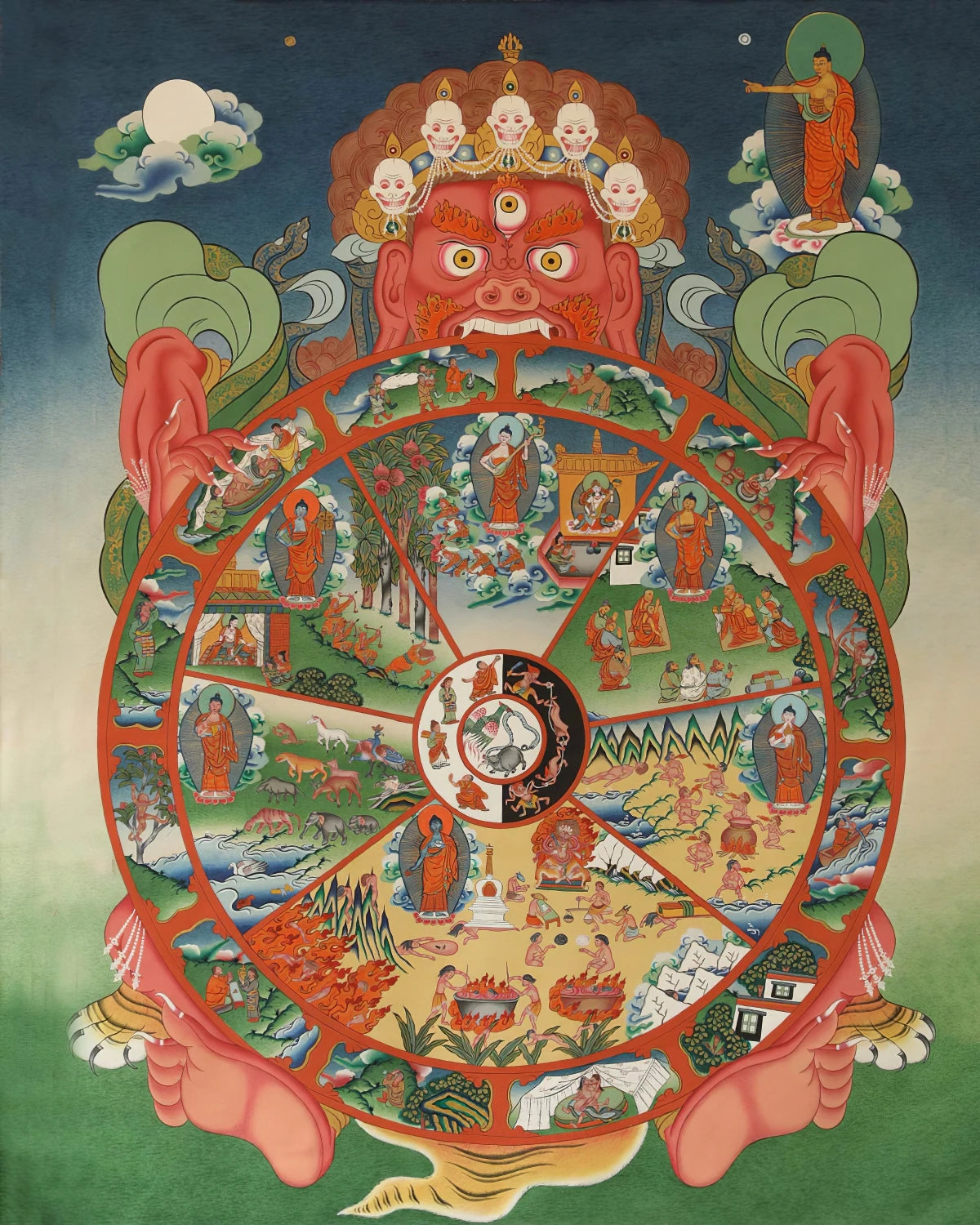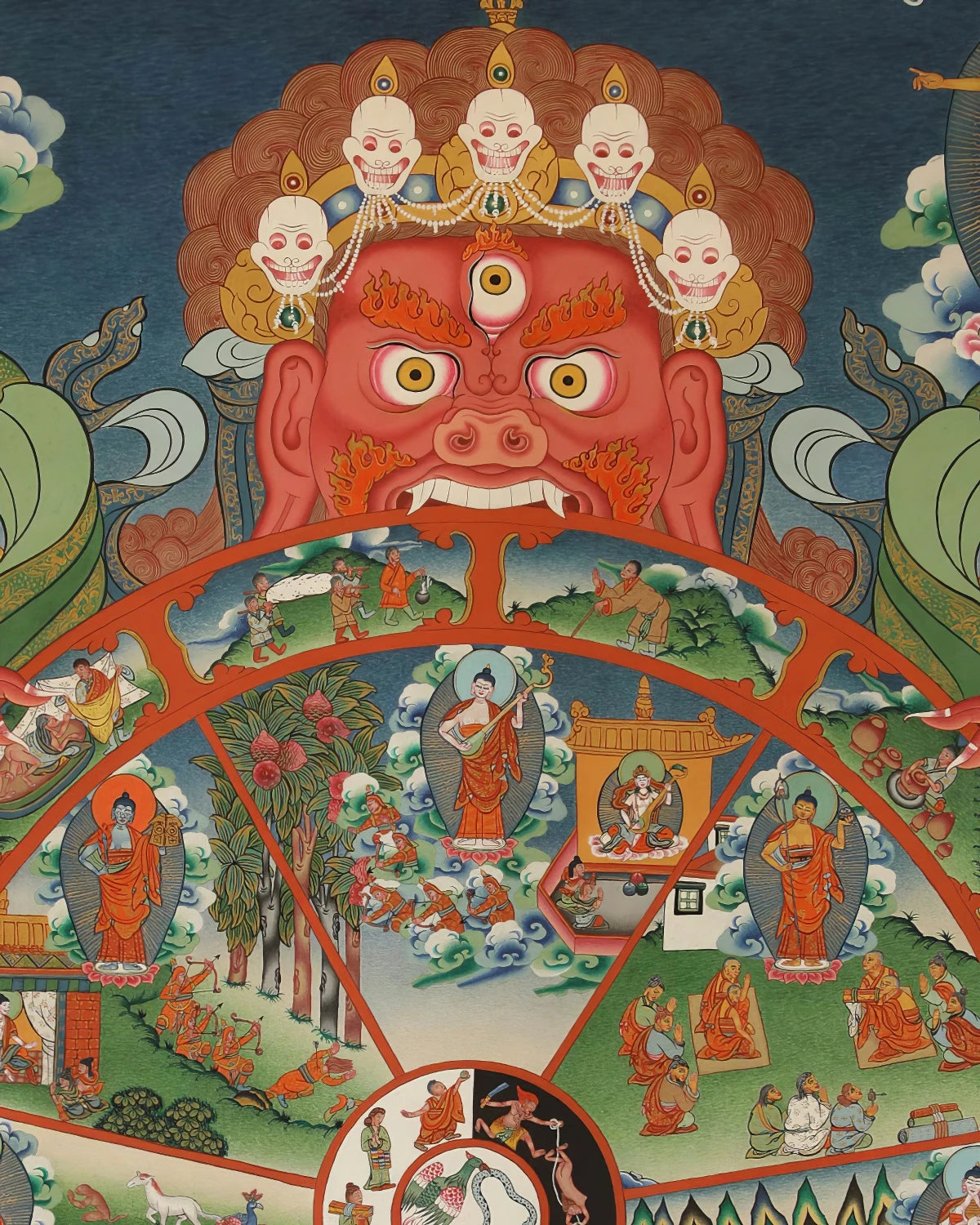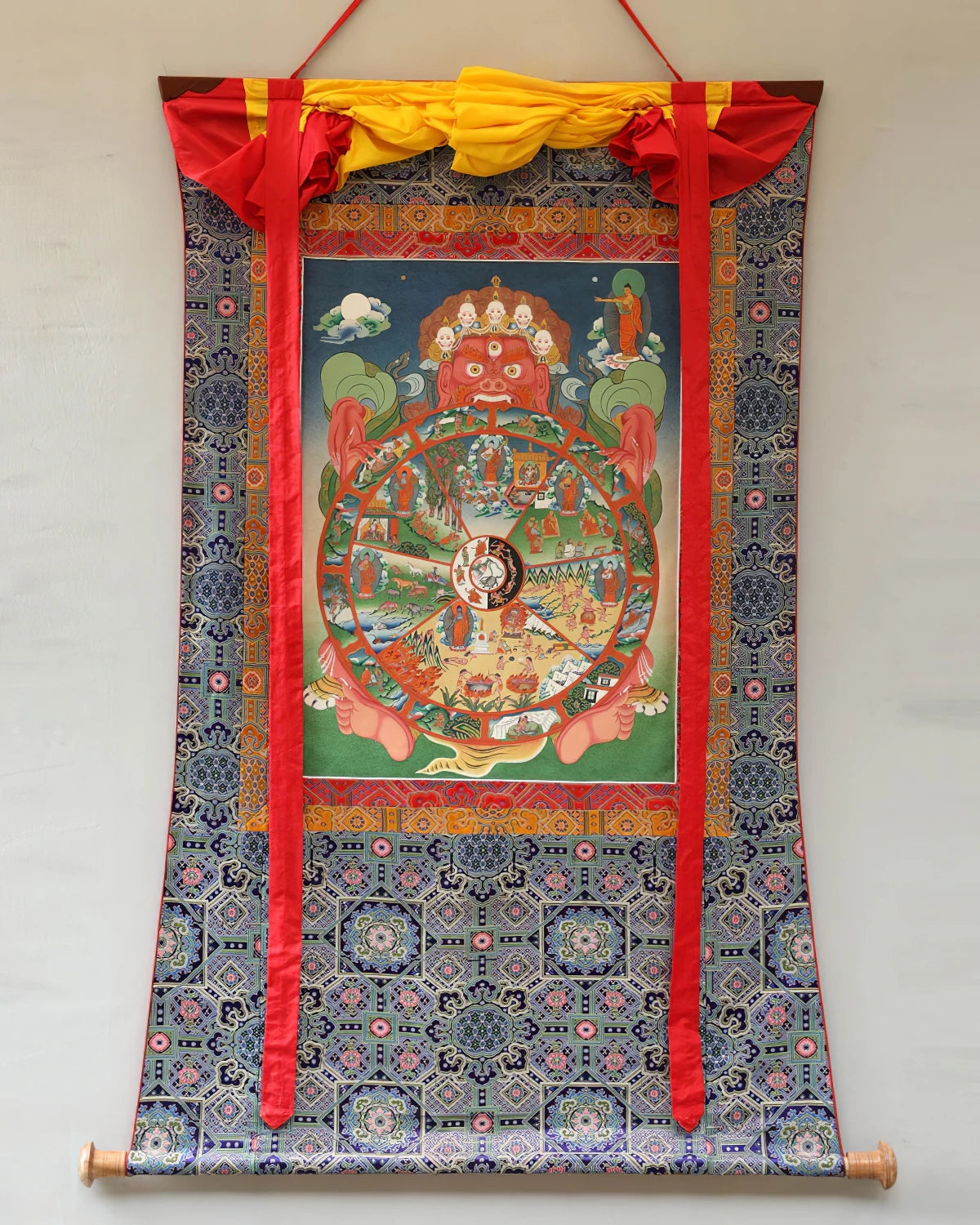


Wheel of Life (5ft)
In Tibet, a painting of the Wheel of Life was often found near the entrance to Buddhist temples, a reminder of the predicament that sentient beings find themselves in, while the temple contains symbols of liberation from it. The first such drawing is said to have been made by the Buddha himself when a king who was his disciple asked what he might present to a neighbouring king as a gift.
The continual cycle of the life of sentient beings is depicted as a wheel with a hub, spokes and rim gripped between the jaws of the lord of death. Six sections between the spokes reveal different destinies as human beings, gods and demigods – the higher, happier and more favourable realms – and animals, hungry spirits and denizens of hell – the lower realms characterised more by intense suffering. At the hub, three creatures chase after each other; a cockerel representing attachment, a pig representing ignorance and a snake representing hatred. There are the three destructive or afflictive emotions that could sentient beings’ minds and give rise to the actions that compel them to revolve in the cycle of existence.
An inner circle around the hub illustrates the effects of actions. It is in two halves, the left half depicting virtuous actions and the right unwholesome actions. The people on the left are facing upwards, destined for higher, happier birth and the people on the right face downwards to births in misery.
The outer rim of the wheel displays pictures of the twelve links of dependent arising, which, starting with ignorance and ending with aging and death, represent the course of our lives.
The twelve links are illustrated as follow:
1. A blind woman – ignorance
2. A potter – compositional action
3. A monkey looking out of a window – consciousness
4. People in boat – name and form
5. An empty house – the six sources of perception
6. A man and woman embracing – contact
7. An arrow piercing an eye – feeling
8. A man drinking alcohol – attachment
9. A monkey picking fruit – grasping
10. A pregnant woman – existence
11. Childbirth – birth
12. A corpse being carried for cremation – aging and death
The circulatory of the wheel indicates continuity of cyclic existence. It is rimmed by the twelve links to show what binds us within the wheel. While the contents of the wheel depicts the sufferings of existence and their causes, the round white full moon above the wheel represents the cessation of suffering. The Buddha is pointing to the moon to show that if we follow the path he has described, we can attain liberation from the cyclic existence.
The thangka comes framed in a traditional silk brocade border.
Craftsmanship
Choose options




